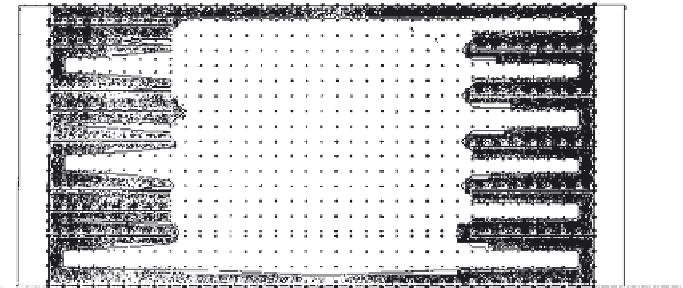Geoscience Reference
In-Depth Information
Figure 19
Influenced zones assuming saturated condition (zero pore pressure) at the
crest and the side faces of the wall.
2. Infiltration tests performed for 10 days on tension cracks observed for
NCKU walls assuming zero pore pressure at the top of the walls and
cracks
3. Migrations of saturation fronts in the NCKU walls assuming surfaces
of the walls were saturated at wall face during rainfall
4. Back-analysis of the infiltration test result for Section 3-A of the test
embankment
Figure 17a-c
show the contours of volumetric water content in the
backfill of NCKU walls at the end-of-trench infiltration tests. The original
volumetric water content at the completion of the walls was 0.27. It is seen
that the influenced zones were quite limited. It is also seen that the
geosynthetic composite layer played a positive role in lowering the water
content in the reinforced zone. In analysis (2), the tension cracks were
located immediately behind the reinforced zones as observed in the
dismantling of NCKU walls.
The results are shown in
Fig. 18a-c.
It is seen that the reinforcement
layers may have two functions when the tension cracks extend to a certain
depth. These two functions include drainage in the horizontal direction and
raising the water content in the vicinity of reinforcement layers. The result of
analysis (3) is shown in Fig. 19. In this analysis, the boundaries (vertical wall
faces and top of the walls) were assumed fully saturated due to a continuous
rainfall for 10 days.
It is seen that the reinforcement layers played a negative role because they
facilitated the penetration of saturation fronts into the backfill. It is considered










Search WWH ::

Custom Search